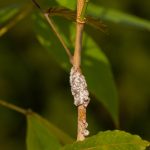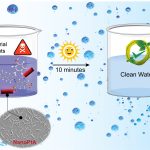The towering termite mounds found across the IISc campus are inspiring both ecologists and engineers to make important discoveries about sustainable building

To an untrained eye, the huge termite mounds – mud structures scattered across the IISc campus – look nothing out of the ordinary. However, they are a treasure trove of information for ecologists and architects, who have been studying these complex structures for decades. “Not all termites build such mounds; these giant mounds are built by fungus-farming termites,” points out Renee M Borges, Professor at the Centre for Ecological Sciences, IISc. These termites cultivate fungi in their mounds, for which they need to maintain constant temperature and humidity inside. The abundance of these particular termites on the IISc campus (and in South India) was one of the main reasons why Borges decided to study them.
Borges’ lab has been investigating these termites as part of a larger goal to understand interactions between species. In an earlier study, for example, they discovered how the termites keep their fungus farms free of parasites. While soil scientists, architects and engineers have carried out studies on self-organisation, social behaviour, and heat and mass transfer inside a termite mound, few have tried to tease out how exactly these insects construct their homes, and what the internal structure looks like, she says.
To explore these questions, a few years ago, Borges decided to collaborate with Tejas G Murthy, Associate Professor at the Department of Civil Engineering. Murthy recalls how a lunch discussion about these fascinating systems piqued his interest, when a former colleague drew him in by casually mentioning that this could be “a cool granular mechanics problem”. The discussions broadened afterwards and, along with PhD student Nikita Zachariah, they started asking more specific questions such as: how is the climate controlled inside a mound? How exactly do the termites build them? What gives the mound strength and stability? “No one was really looking from [both] an engineering and ecological perspective,” says Borges.

Their work, however, wasn’t without challenges, one of which was sample collection from inhabited mounds, says Zachariah. “I didn’t want to destroy the mound to collect my sample and so had to build my own drilling machine for sample collection. This ensured that there was minimal damage to the mound.” The researchers also had to replicate the conditions of the mound interior for termites that they housed in the lab. Moreover, in the field, the team also had to deal with some people who mistakenly feared these mounds thinking that they harboured snakes, or considered them as sacred sites. The team, therefore, had to put up notices on all their research mounds on the IISc campus.
In one of their first joint studies, published in Scientific Reports in July 2017, they investigated the physical, chemical and engineering properties of termite mound soils, and identified a unitary structure called a bolus (like a brick) that is used by the termites as the building block. These boluses come in two sizes that are produced by major and minor worker termites, the two worker castes (termites also have soldiers and reproductive castes). Big and small boluses are interspersed during mound building, which may contribute to tighter packing of the material. The team also investigated the range of materials which the termites choose to build their mounds with. “We concluded that a granular material in the presence of water and which has organic matter is ideal for mound building,” says Murthy.
In another study published in Royal Society Open Science in 2020, they found that what gave the mounds their great strength was a specific level of moisture content in the soil and consequent soil suction – how much negative water pressure it creates in the pores. In addition, to weather-proof the mounds, these termites mix the soil with their secretions. This is why these mounds don’t wash away in the rain. “We thought that secretions from termites are key to the stability of these mounds; and that these secretions are applied to the soil. It turns out that suction creates this wonderfully strong soil fabric, essentially saving the requirement for a lot of the secretion, something that is evolutionarily beneficial to termites,” says Borges.
The researchers also investigated the constitution of the mound itself and found it to be a bi-layered structure that has a more porous outer buttress and less porous (denser) inner shell, which enhances stability and also allows better ventilation. These results were published in Scientific Reports in August this year
Working as an interdisciplinary team has helped the researchers pursue such broad questions, says Borges. “[It is] not possible to tackle this as either a pure granular mechanics problem or as a problem of animal behaviour.”
Studying these termite mounds also has important implications for low carbon construction technologies and for the design of ventilation systems in buildings, says Murthy. “It is fascinating that without spending that much energy, earth structures which last for centuries can be made.”






